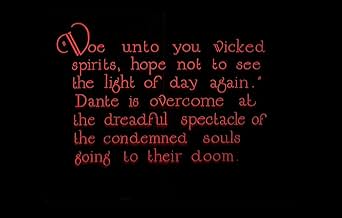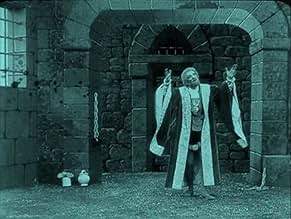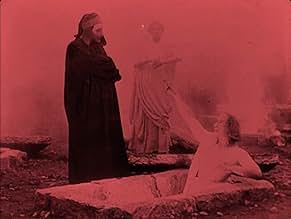A striking piece of history, this 1911 adaptation of Dante's The Divine Comedy was the first full length feature made in Italy.
Taking visual inspiration from Gustav Doré's iconic illustrations, Giuseppe de Liguoro worked for more than three years with 150 people and what was then the biggest film budget ever to complete his masterpiece.
Newly restored from a variety of sources, it's still an amazing visual experience as the poet Virgil leads Dante on a journey through Purgatory and Hell.
L'Inferno's pantheon of demons and sinners are imaginatively conjured up on ambitious sets using a variety of then-pioneering cinematic tricks such as forced perspective to allow a gigantic Pluto to rage at the dwarfed interlopers, overlays for when they arrive at the city of Dis and see furies scaling the battlements and an ingenious combination of miniatures and live action to create remarkable encounters with three chained giants and a final confrontation with Lucifer himself.
In between these set pieces, Dante and his guide meet a rogues gallery of history's great sinners and the ironically apposite corners of Hell reserved just for them.
The only real pitchfork in the backside of this otherwise commendable project is the decision to harness the visuals to a soundtrack culled from Tangerine Dream's concept album based on the same literary source.
It's not the German electronic outfit's best work and comes with the additional burden of vocals which tend to detract from the Gothic mood created by the visuals alone.
Still, you can always turn down the sound and play something more sympathetic, say, Bartok's Concerto For Orchestra, because this is one screen gem that deserves to be enjoyed several times over.





















